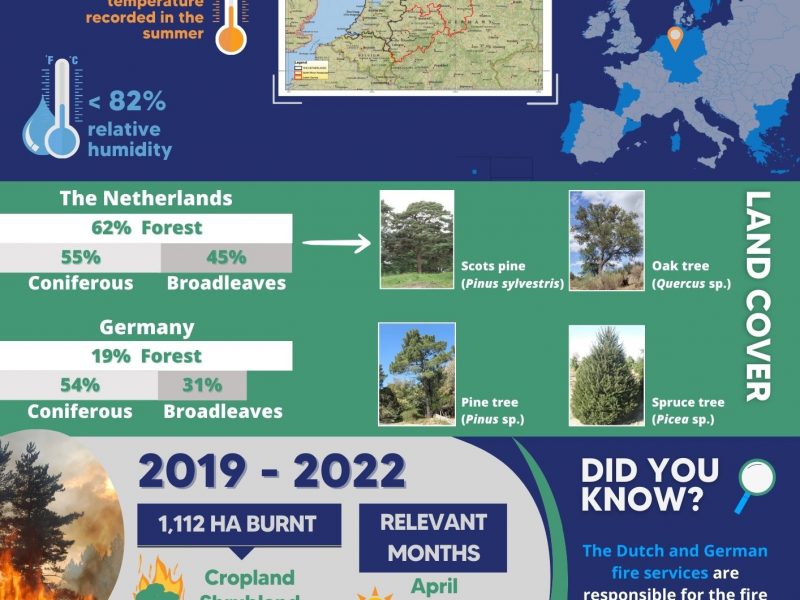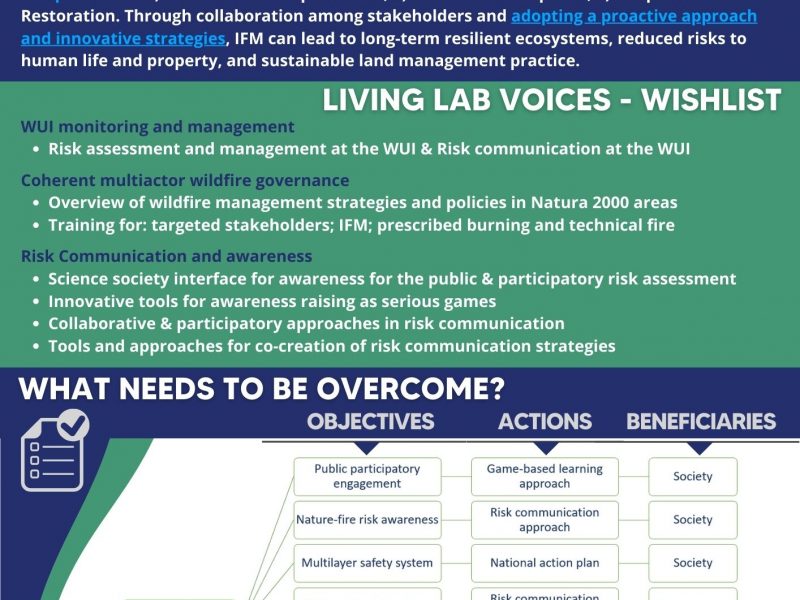CONTEXT
Fire regimes are changing around the world, and the knowledge generated on these changes and how to deal with them is very often dispersed. This is because of the well-known barriers for knowledge exchange between disciplines, countries, and sectors (academia, policy and practice).
The Living Lab in Germany-The Netherlands will be located in a transboundary area of these two countries. Germany and The Netherlands are non-traditionally fire prone countries. Yet changing fire regimes are bringing in new wildfires. As a result, these countries are now reinventing the wheel of fire management while they could benefit from learning from other countries and experiences in other fields, such as water management.
FIRE MANAGEMENT IN GERMANY-THE NETHERLANDS
Fire management in the Netherlands and Germany has a long tradition. However, because of their fire history, fire services are mostly trained to deal with urban fires while they have little preparedness to respond in case of non-urban fires.
The intensity and frequency of ongoing wildfires are a relative new phenomenon. However, the region has a little forest management tailored to forest fire and limited policy for wildfires.
Therefore, systematic registration, innovative fire management practices and learning from other countries is central. In particular, the region urge to develop its fire management practices as relative small fires can have huge impact due to the high population density, intensive use of space and large areas of Wildland Urban Interfaces.
CHALLENGES
- To foster knowledge exchange between Netherlands and Germany and with traditional fire prone countries
- To increase awareness among wider public, in governance and decision-making processes among stakeholders involved
- To make integrated fire management an essential part of landscape management
INNOVATION ACTIONS
Advanced Technology Solutions - Support Tools for Integrated Fire Management
IA 5.1. Demonstration of an integrative umbrella system for estimating EWE risk and impact in real time with HR weather data
IA 5.2. Demonstration of real-time EWE simulation and smoke spread based on coupled fire-atmosphere approaches using of HR weather data
IA 5.4. Piloting models for fire combustion and Pyrocumulonimbus with use of HR data
IA 5.5. Testing of vertical atmospheric structure models based on satellite constellation in EWE
IA 5.8. Prototyping and testing innovative tools for EW ICS training certificates
IA 5.10. Development of a Pan-European system to define management priorities to mitigate fire impact
Factsheets
A set of factsheets was produced by forestWISE to interactively complement the information available on the Living Lab.
PARTNERS
{{ group }}
{{ object.name }}
{{ object.name }}
{{ object.subheader }}
{{ icon.replace(/^icon_/, '') }}
{{ label }}
Contact

Cathelijne Stoof
- Wageningen University & Research
- cathelijne.stoof@wur.nl

Jasper De Vries
- Wageningen University & Research
- jasper.devries@wur.nl

